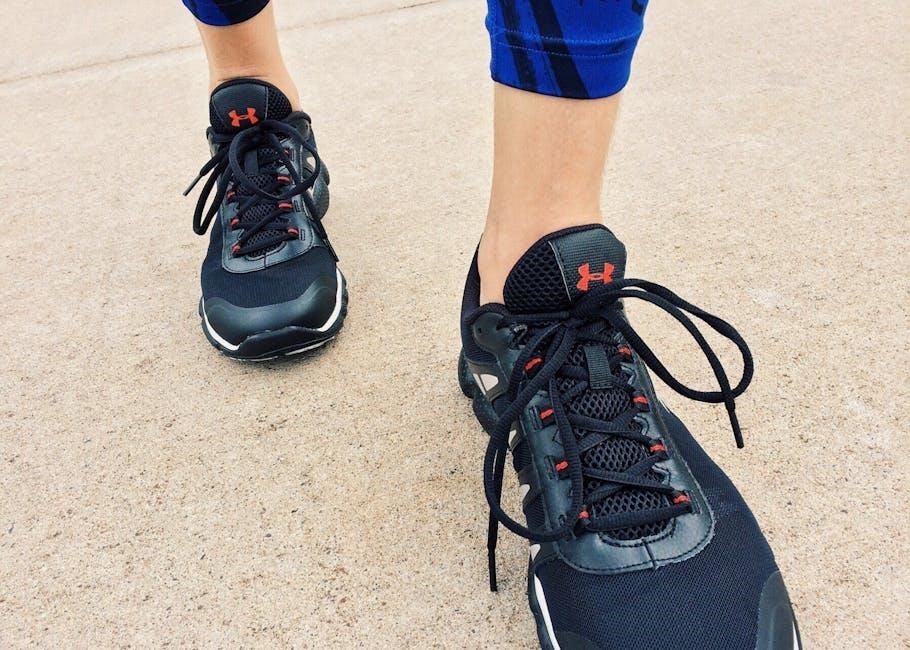Wheel Alignment: A Step-by-Step Guide
Performing a wheel alignment involves several key steps; First, raise and support the vehicle․ Then, disconnect the spring strut if adjusting camber․ Accurately assess the vehicle’s condition and use BMW special tools, if necessary, for precise adjustments․
Understanding Wheel Alignment
Wheel alignment is the proper adjustment of all interrelated suspension angles to the car makers specification․ In alignment terminology, adjustment angles are called caster, camber, toe-in, steering axis inclination (SAI), vehicle ride height and toe-out on turns․ A four-wheel alignment combines elements of the front-end and thrust-angle alignments, positioning the rear axle angles․ This comprehensive alignment is typical for all-wheel drive vehicles and front-wheel drive cars with adjustable/independent rear suspensions, ensuring excellent road holding and preventing the vehicle from pulling to one side, which causes wear on the tires and the steering & suspension parts․
Why Wheel Alignment is Important
Wheel alignment is crucial for preventing uneven tire wear and ensuring optimal vehicle handling․ Properly aligned wheels maximize tire lifespan, improve fuel efficiency, and contribute to a safer driving experience on the road․
Preventing Tire Wear
Incorrect wheel alignment is a primary cause of premature and uneven tire wear․ When wheels are misaligned, tires experience abnormal friction and stress, leading to rapid deterioration of the tread․ Adjusting the wheels to the car maker’s specifications ensures that the tires make even contact with the road surface, distributing wear evenly across the tire․ Proper alignment will prolong the life of your tires, saving you money in the long run․ This excellent road holding reduces the frequency of tire replacements and maintains optimal performance․
Improving Handling and Fuel Efficiency
Proper wheel alignment significantly improves a vehicle’s handling and fuel efficiency․ When wheels are correctly aligned, the vehicle tracks straight and responds predictably to steering inputs․ This enhances stability and control, making driving safer and more enjoyable․ Furthermore, aligned wheels reduce rolling resistance, allowing the engine to work less hard to maintain speed․ This decreased effort translates to better fuel economy, saving you money at the pump and reducing your environmental impact․ Proper alignment ensures an excellent road holding and smoother driving experience․
Tools and Equipment Needed
Performing a wheel alignment requires specialized tools․ Essential equipment includes a wheel alignment machine, turning plates, and wheel clamps․ Depending on the vehicle, special tools like BMW-specific adjustment tools might also be necessary for accurate alignment․
Wheel Alignment Machine
The wheel alignment machine is a critical piece of equipment for measuring and adjusting wheel angles․ Modern machines often use advanced technology, like video cameras, to analyze targets attached to the wheels․ These systems provide precise readings of caster, camber, and toe․ The software then guides the technician through the adjustment process, ensuring accurate alignment according to the vehicle manufacturer’s specifications․ Proper use of the alignment machine is essential for achieving optimal handling and tire wear․
Turning Plates and Wheel Clamps
Turning plates are essential components used in conjunction with a wheel alignment machine․ These plates allow the front wheels to freely rotate during the alignment process, enabling accurate measurement of steering angles․ Wheel clamps securely attach the alignment targets or sensors to the wheels, ensuring stability and precise data collection․ Proper installation of wheel clamps is crucial to prevent slippage and maintain accuracy during measurements․ High-quality turning plates and clamps contribute to a reliable and effective wheel alignment procedure․
Special BMW Tools for Adjustment (if applicable)
When performing wheel alignments on BMW vehicles, specific tools might be necessary to access and adjust certain suspension components․ These special tools are designed to fit unique BMW hardware and ensure proper torque and alignment settings․ Identifying and locating these adjustment points requires familiarity with BMW models and their respective suspension designs․ Using the correct BMW special tools is essential for achieving accurate and reliable wheel alignment results, adhering to the manufacturer’s specifications and maintaining vehicle performance․

Preparation for Wheel Alignment
Before starting, perform a thorough vehicle inspection․ Accurately assess the condition of the suspension․ Then, mount targets or sensors to the wheels․ This setup is crucial for precise measurements during alignment․
Vehicle Inspection and Assessment
Prior to initiating any wheel alignment adjustments, a comprehensive vehicle inspection is paramount․ Begin by visually inspecting the tires for uneven wear patterns․ Uneven wear is often a telltale sign of existing alignment issues․ Next, examine the suspension components, including control arms, ball joints, and tie rod ends, for any signs of damage or excessive play․ Document any findings to accurately assess the vehicle’s overall condition․ This initial assessment will help guide the subsequent alignment procedure and ensure its effectiveness․
Mounting Targets/Sensors
After completing the initial vehicle inspection, the next critical step involves securely mounting the alignment targets or sensors to each wheel․ These targets or sensors are essential for the wheel alignment machine to accurately measure the existing wheel angles․ Ensure that the mounting process is performed carefully and precisely, following the manufacturer’s instructions for the specific equipment being used․ Improperly mounted targets or sensors can lead to inaccurate readings, resulting in incorrect alignment adjustments․ Always double-check the stability and positioning of each target before proceeding․

Step-by-Step Alignment Procedure
The wheel alignment procedure begins with initial measurements of caster, camber, and toe․ Next, adjust the front wheels, focusing on camber, caster, and toe adjustments, followed by adjustments to the rear wheels if applicable․ Finally, perform post-alignment checks․
Initial Measurements: Caster, Camber, and Toe
Before starting any adjustments, accurate initial measurements of caster, camber, and toe are crucial․ These measurements will vary based on the vehicle manufacturer’s specifications, found within the document that provides detailed alignment settings․ Use a wheel alignment machine, such as a Pro-Align system, to gather this data․ Proper identification and location of adjustment points are vital during this stage․ These measurements define the starting point for the wheel alignment process, ensuring that all adjustments are made relative to the vehicle’s original condition, allowing for precise alignment․
Front Wheel Adjustment
After obtaining initial measurements, the next phase involves adjusting the front wheels․ This typically includes camber and caster adjustments, which may require special BMW tools, if applicable, and toe adjustments․ Adjustments are performed to align the wheels with the manufacturer’s specifications, thus improving handling and reducing tire wear․ The upper arm-to-frame mounting bolts may have set shims that must be replaced with washers․ It’s important to consult the relevant chart for caster and camber adjustments․ The goal is to ensure solid contact with the road surface․
Camber and Caster Adjustment (using shims/bolts)
Adjusting camber and caster often involves using shims or bolts to alter the suspension geometry․ Specifically, upper arm-to-frame mounting bolts may utilize set shims, which sometimes need replacement with washers․ Refer to the vehicle-specific chart for the precise adjustments required․ The method varies depending on the equipment used․ Identify and locate the adjustment points, possibly requiring BMW special tools․ Accurately assess the vehicle’s condition before making any adjustments to ensure proper alignment per the manufacturer’s specifications, achieving optimal handling and tire wear․
Toe Adjustment
Toe adjustment is crucial for preventing uneven tire wear and ensuring proper steering response․ The goal is to align the wheels so they are parallel or within the manufacturer’s specified toe-in or toe-out range․ This adjustment helps the tires make even contact with the road surface․ Incorrect toe settings can cause the vehicle to pull to one side․ Adjusting toe involves altering the tie rod length․ Make small, precise adjustments and re-measure after each adjustment until the desired toe angle is achieved, referring to the vehicle’s specifications․
Rear Wheel Adjustment (if applicable)
Rear wheel adjustment is essential for vehicles with independent rear suspensions, particularly all-wheel drive and some front-wheel drive cars․ This process ensures that the rear axle angles are correctly positioned, complementing the front-end alignment․ Adjusting the rear wheels helps to achieve a comprehensive four-wheel alignment, improving handling and preventing tire wear․ The procedure typically involves adjusting camber and toe angles to meet the manufacturer’s specifications․ Proper rear wheel alignment contributes to overall vehicle stability and optimal tire contact with the road surface, enhancing driving performance․
Adjusting Rear Camber and Toe
Adjusting rear camber and toe involves precise manipulation of the suspension components․ Begin by identifying the adjustment points on the rear suspension․ Special tools may be required, especially for BMW vehicles, to accurately perform these adjustments․ Camber, the angle of the wheel relative to vertical, and toe, the angle of the wheel relative to the vehicle’s centerline, must be adjusted to meet the manufacturer’s specified angles․ These adjustments ensure proper tire contact with the road, preventing uneven wear and optimizing vehicle handling․ After adjustments, re-measure to confirm accuracy․
Final Measurements and Adjustments
After performing the initial front and rear wheel adjustments, it’s crucial to conduct final measurements to verify alignment accuracy․ Use the wheel alignment machine to obtain precise readings for caster, camber, and toe on all wheels․ Compare these measurements to the manufacturer’s specifications․ If any values fall outside the specified range, make further adjustments as needed․ This iterative process ensures that all alignment angles are within tolerance․ Accurate final measurements are essential for optimal tire wear, vehicle handling, and overall driving safety, confirming a successful wheel alignment procedure․
Post-Alignment Checks
After alignment, check steering wheel centering․ A test drive verifies proper handling and confirms the vehicle doesn’t pull to one side․ Uneven tire wear patterns should also be inspected to confirm the alignment’s effectiveness․
Steering Wheel Centering
Ensuring the steering wheel is properly centered after a wheel alignment is crucial for driver comfort and vehicle control․ A misaligned steering wheel can lead to driver fatigue and a feeling of instability․ After making adjustments, visually inspect the steering wheel’s position while driving straight․ If it’s off-center, further adjustments to the toe settings may be necessary to achieve perfect centering․ Minor adjustments can make a significant difference in the overall driving experience and prevent premature tire wear due to incorrect steering angles․
Test Drive and Verification
After completing the wheel alignment adjustments, a test drive is essential to verify the accuracy and effectiveness of the work․ During the test drive, pay close attention to how the vehicle handles and responds to steering inputs․ Check for any pulling to one side, vibrations, or unusual noises․ Ensure the steering wheel returns to center smoothly after making turns․ This verification step confirms that the suspension is properly aligned, providing optimal handling, tire wear, and overall driving safety․ If issues persist, revisit the alignment machine for further refinement․

Common Issues and Troubleshooting
Wheel alignment can present challenges․ Steering pull, uneven tire wear, and vibrations are common․ Addressing these requires careful inspection, precise adjustments using the alignment machine, and a thorough understanding of vehicle-specific specifications․
Steering Pulling to One Side
One common issue following wheel alignment is the vehicle steering pulling to one side․ This often indicates uneven caster or camber angles between the front wheels․ A thorough re-check of alignment specifications is crucial․ Ensure both front wheels meet the manufacturer’s specifications for caster, camber, and toe․ Also, inspect for tire conicity or radial pull, which can mimic alignment issues․ Swapping front tires can help diagnose a tire-related pull․ If the pull persists after verifying alignment and tire condition, further suspension component inspection may be necessary․
Uneven Tire Wear
Uneven tire wear is a significant indicator of wheel alignment problems․ Feathering, where one side of the tread blocks is worn more than the other, often points to incorrect toe settings․ Wear on the inside or outside edge of the tire is typically caused by excessive camber․ Cupping, or scalloped wear patterns, can suggest issues with suspension components like shocks or struts, though alignment can contribute․ Addressing uneven tire wear requires a comprehensive alignment check and adjustments to bring the wheels back within the manufacturer’s specified angles․ Regular tire rotations can also help mitigate uneven wear․

Wheel Alignment Specifications
Wheel alignment specifications are crucial for optimal vehicle performance․ These specifications, provided by the manufacturer, detail the precise angles (caster, camber, toe) to which the wheels must be aligned․ Accurate adherence ensures proper handling and tire wear․
Understanding Manufacturer Specifications
Manufacturer specifications are the cornerstone of accurate wheel alignment․ These specs provide the target values for caster, camber, and toe angles, tailored to the specific vehicle model․ Adhering to these ensures the vehicle handles as intended by the designers․ Deviation can lead to uneven tire wear, instability, and reduced fuel efficiency․ These specifications consider factors like vehicle weight distribution, suspension design, and intended driving dynamics․ Always consult the vehicle’s service manual or a reliable database for the correct alignment settings before beginning any adjustments․
Adjusting to Specified Angles
Achieving the specified alignment angles requires careful and methodical adjustment of the vehicle’s suspension components․ Locate the adjustment points for caster, camber, and toe, often involving shims, bolts, or eccentric cams․ Use specialized tools, such as wrenches and alignment gauges, to make precise changes․ Small adjustments can significantly impact the final alignment, so proceed incrementally․ Regularly check the alignment readings using an alignment machine to monitor progress and ensure the angles are within the manufacturer’s specified tolerance range․ Proper adjustment ensures optimal handling, tire wear, and fuel efficiency․
